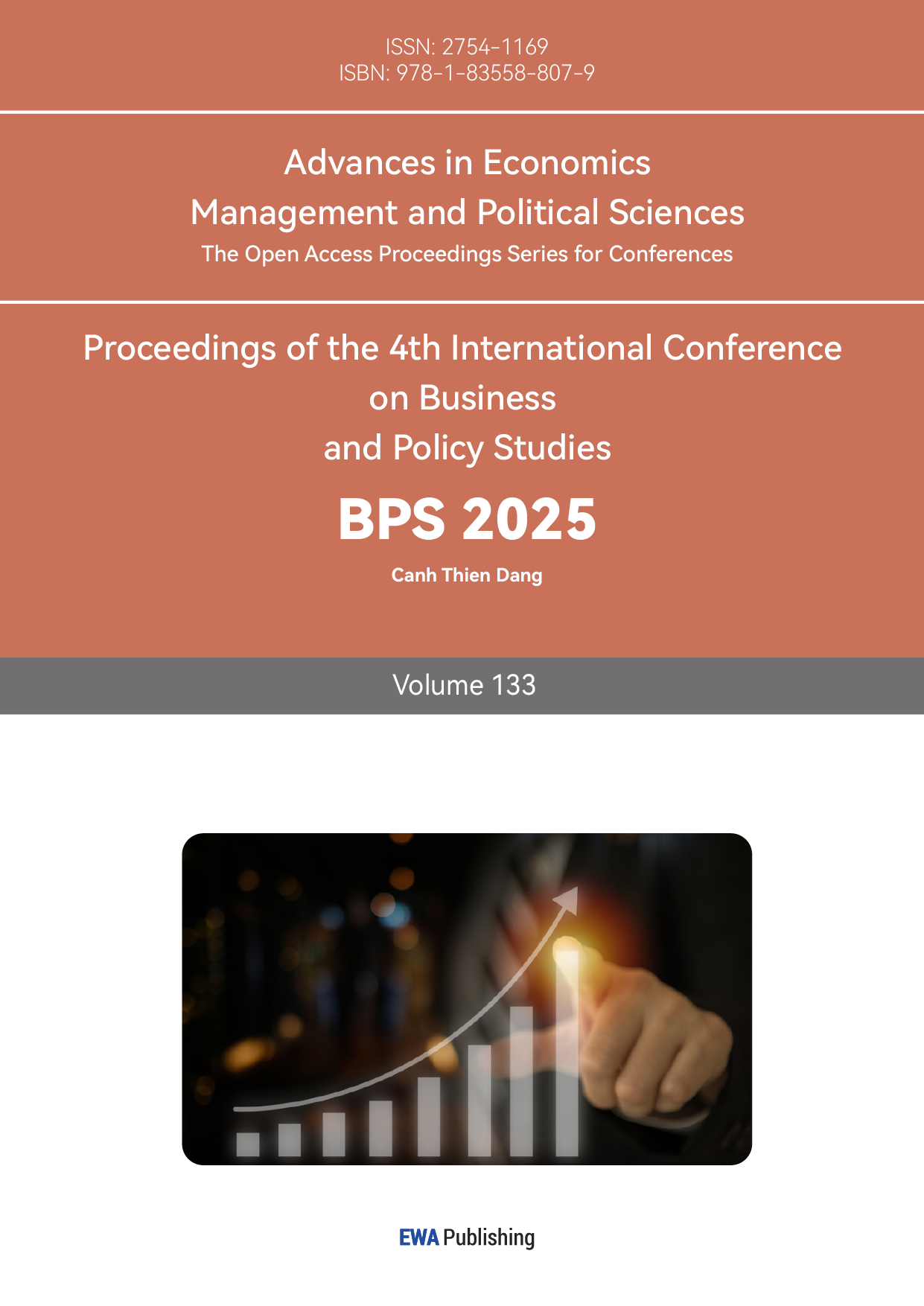1.Introduction
The Song Dynasty is considered to have had a high level of productivity compared to other dynasties in ancient China, it made great progress in production techniques, goods, and tools, although most of them took place in agriculture and handicrafts, probably because of the limitations of the ideas of the time[1]. In the context of the development of the commodity economy, the increase in the wealth of the country and the people, after meeting the basic needs of food and clothing, science also reached an unprecedented peak in the Song Dynasty, for example, the compass applied to ocean voyages and the advanced shipbuilding industry at that time, the movable type printing invented by Bi Sheng, the world's first real mechanical clock, and so on.
The innovation is related to the economy. Looking back at the first industrial revolution of the symbol of the Jenny spinning machine, the United Kingdom in the 16th-18th century adopted mercantilist policies, encouraged export trade, promoted the development of handicrafts, and then in the 60s of the 18th century Jenny spinning machine appeared in the factory handicraft industry is the most developed cotton textile industry, labour productivity increased, the economy developed rapidly, with free trade policy as the mainstream, and then the United Kingdom scientist Michael Faraday invented the generator and electric motor for the subsequent electrical era to lay the foundation. In the 70s of the 19th century, the second industrial revolution broke out, and the industrial structure changed from light industry to heavy industry. After the economic crisis and overproduction, the United States implemented Roosevelt's New Deal in the 30s of the 20th century, got out of the economic crisis, restored economic strength, and invented the world's first electronic computer in the United States 40s of the 20th century, so that mankind began to step into the information age. Schwab proposed that the Fourth Industrial Revolution would begin at the turn of the century [2]. In the wave of the fourth industrial revolution and with the development of China's economy, the common question of the Chinese enterprise may be how to seize the new market opportunities under the under the technological revolution and become the commercial leader in their industry or even in the century. In the long run, enterprise innovation may be the key [3].
2.Literature Review
In the context of the technological revolution, the term innovation was given a new meaning over time. American-Austrian economics J. A. Schumpeter was the first to propose the concept of innovation and introduced it into the concept of economics. He believes that innovation is produced in the process of new combinations of all new variables that appear in the process of production development, and that economic growth is mainly achieved through creative destruction. However, he did not mention that the main sustained momentum for economic growth. Solow took neutral technological change as one element in the economic growth model, and constructed the Solow Growth Model, but neutral technological change is considered an exogenous variable, which is the given pre-assumed amounts [4]. One question of exogenous variables is the inherent mechanism of technological progress. Romer assumes that technological change that arises from intentional investment decisions made by profit-maximizing agents is the endogenous variable that drives the growth of the economy [5]. These new technologies are mainly invested by the innovative enterprises for scientific research and innovation in the R & D department of the enterprise, and the enterprise eventually owns the patents for these new technologies to obtain excess profits under the protection of patent law. Aghion and Howitt introduced the concept of creative destruction into their model and believed that technology provided by entrepreneurs is the most important intermediate good in economic production, once an entrepreneur has a leading technology and has an incentive to continuously invest resources in research and development [6]. When these R&Ds are successful in the market, new technologies can replace old ones in the mainstream. Christensen originally proposed the disruptive innovation theory and described a concept of “disruptive technology”, which mainly referred to the technology as inferior in the main attributes but potential consumers value may replace the original mainstream technology products in the market in the end [7]. Disruptive innovation is the strategy of the companies that may change the habits of users and be thought of being ‘weak substitutes’ for the established innovation product, which occurs when a company with fewer resources moves upmarket and challenges an incumbent business. There are two types of disruptive innovation, one is low-end disruption and another one is new-market disruption [8]. Correspondingly, sustaining innovation, typically, is the strategy of the companies that can be defined by improving existing products. Sustaining innovation occurs when a company’s product gets more sophisticated over time and moves upmarket to capture a wider range of customers for higher profits [9][10].
Although the disruptive innovation theory has won increasing recognition and discussion from researchers and practitioners, the concept gets widespread misunderstanding when elicited by frequent citations or vibrant debate of research in academic circles, thus, Christensen et al. propose these three underexplored topics, response strategies, performance trajectories, and innovation metrics in future research [11]. Reinhardt and Gurtner believe that the embeddedness of products in the market may help to better understand the dynamics of disruptive innovations [12]. Guo et al. present a multidimensional measurement framework to assess the disruptive potential of product innovations, which includes three aspects, such as technological features, marketplace dynamics and external environment [13]. Kivimaa et al. focus on the view of sustainability transitions, in terms of future research in the disruptive innovation theory [14]. Si and Chen point out that widely accepted effective scales or models, extended far beyond the scope of the business world and disputes of Christensen’s view of disruptive innovation are still a lot of room for future research, also, the theory may be embedded in new contexts following the world changes [15].
3.Methodology
Drawing on the disrupted innovation view, analyse different representative innovative enterprises in China, and then try to summarize the path for Chinese enterprises to innovate and develop sustainably according to the grounded theory of qualitative investigation.
At the end of the year 2023, the list of China's top 50 innovative enterprises was announced by Forbes, these enterprises were thought to pay more attention to the investment of innovation, cross-market operation, and have the organization with the product at its core. These 50 enterprises are mainly from 8 industries. In order to further identify the characteristics of their disruptive innovation, concluding the influence factors of disruptive innovation found in extant literature, Si and Chen proposed the level of analysis of disruptive innovation into five levels including the individual, firm, industry, nation/economy, and network/system levels [15]. The individual level is mainly about the personal characteristics of company managers, for example, the perception of disruptive innovation, inertia, experience, mental models, personal ability. The firm level which influences disruptive innovation is mainly about strategy, organization, marketing, and resources. The industry level for disruptive innovation includes market demand, target market, periodic variation of innovation in the industry, economies of scale and technological and customer capabilities of submarkets. The nation/economy level is about emerging economies, government policy, legislation, tax preferences and embedded social impacts.
Another question is what data or information of enterprises should be analysed, the annual report or corporate social responsibility report may be the answer, as well as additional information on the company's official websites. Wang et al proposed that external and internal corporate social responsibility affects positively affects disruptive innovation through empirical study [16]. Through the method of qualitative research, the public annual reports of these companies in 2023 are mainly analysed. In the process of data/information analysis, it was found that only the information of 34 enterprises could be used for analysis, while the information of the other 16 enterprises was either abandoned because they were not disclosed, or because the establishment time was too short and the information was invalid.
To further explore the path of sustainable development for these enterprises, we are reconsidering the development of the enterprises that have been in existence for over 20 years among the top 50 enterprises. One question is the time period of the enterprise development process to ensure that the development background of all enterprises is at the same time, so as to control the time variable. Enterprise efficiency in innovation significantly positively affects the direct and indirect effects of the economy [17]. Gherghina et al. also believe that rapid economic development is related to the innovation of enterprises, based on this, in the period of China's rapid economic growth, the innovative actions and behaviours of these companies can help understand the reasons why these companies can develop in the long term and be rated as innovative in 2023 [18]. From figure 1, it is noticeable that the total GDP was more than a trillion dollars in 1998 for the first time, and it is clear that the proportion of the year-on-year GDP growth rate began to increase from 1999 until the year of 2008. The figure 1 shows that the year-on-year GDP growth rate in the year of 1995 was the highest from 1960 to 2022. However, during the period around the year of 1995, when China's economy was in a period of reform, and the Chinese government issued some new economic policies different from before, which may have a greater impact on the analysis of enterprises' own innovation activities, and the number of enterprises in that period was relatively small before the period. Therefore, the enterprise innovation behaviours between 1993 and 1995 may not have great reference value. As for these enterprises, according to the list of China's top 50 innovative enterprises announced by Forbes, there are 17 enterprises of them from 6 industries in China over 20 years, and then exclude one of these 16 enterprises because it is hard to find out what the enterprise did through the public information before 2008.
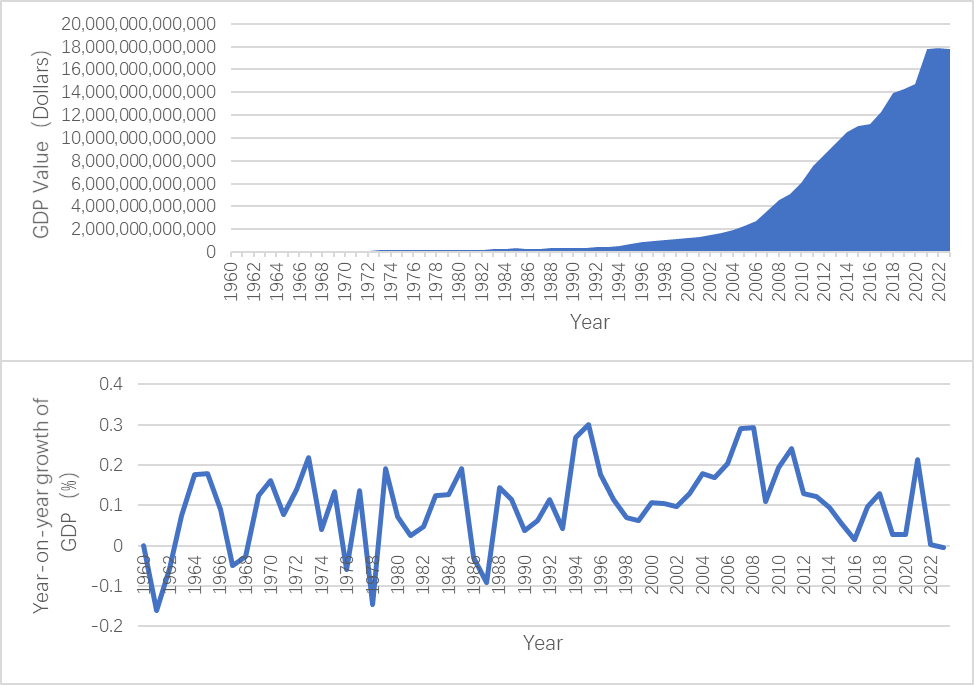
Figure 1: Annual GDP growth value and the percent of year-on-year growth in China
4.Results
Figure 2 shows the establishment time of the Forbes China Top 50 Innovative Enterprises in 2023, with different numbers of companies in different years. In Figure 2, from 1982 to 2023, the establishment of these top 50 innovative companies is mainly concentrated in five different periods, namely around the late 1980s, the late 1990s, around 2004, around 2014, and around 2016. Among them, around 2004 and around 2014, most enterprises were established in these two periods.
Among the top 50 innovative enterprises in Forbes China 2023, excluding enterprises established after 2008 and enterprises with no obvious innovative behaviour before, there are 37 enterprises. With the help of rooted theory, they summarize the technological innovation actions of these enterprises in the growth process, and finally summarize them into 7 kinds of innovation behaviour actions. In Figure 3, among the 37 innovative companies, from 1999 to 2008, most of them set up their own R&D centres and developed their own industry-specific innovative products in China for the first time. In addition, it is worth noting that the scientific and technological innovation of cooperative products with other enterprises and the scientific and technological innovation of school-enterprise cooperation are also the choices of some enterprises.
With the help of Nvivo software, this paper analyses the 2023 annual report or CSR report of 34 enterprises among the top 50 Innovative Enterprises in China in 2023, finds the reference point from the content of the document report, and with the help of rooted theory, summarizes the influencing factors, and then summarizes them into the level of influencing factors. From the 2023 annual reports and CSR reports of 34 companies, through grounded theory analysis and NVivo software analysis, it can be seen that there are many reference points involving the level of influencing factors such as firm, followed by network, and the least involved is individual. At the level of the firm, the most reference points involve resources. In the network influencing factor hierarchy, cooperation (horizontally or vertically) is the most important reference point. In the level of influencing factors, the manager's perception is the most reference point. Then, in the level of influencing factors such as industry, there is not much difference in the number of reference points, but the number of reference points of technological and customer capabilities of sub-markets is the least. Among the influencing factors of the economy/nation, embedded social impacts are the most influential factor reference point.
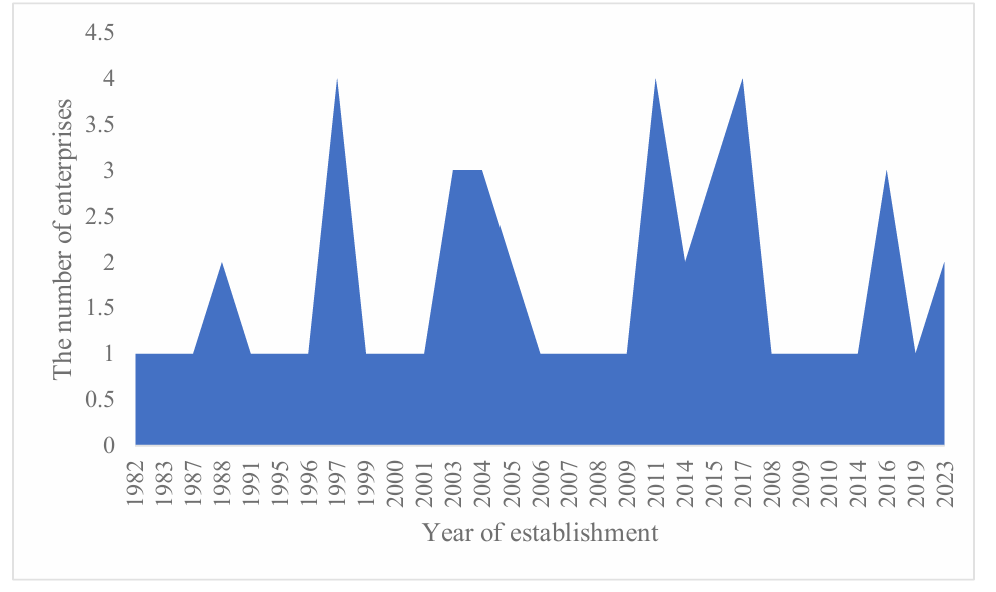
Figure 2: Distribution of Forbes China top 50 innovative enterprises
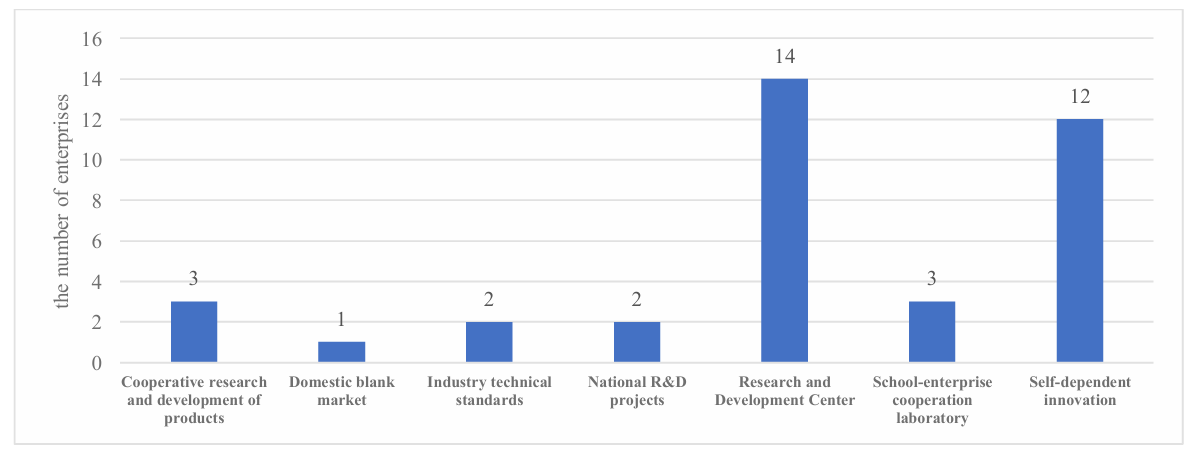
Figure 3: The number of Forbes China 37 innovative enterprises innovative activity choices from 1999 to 2008
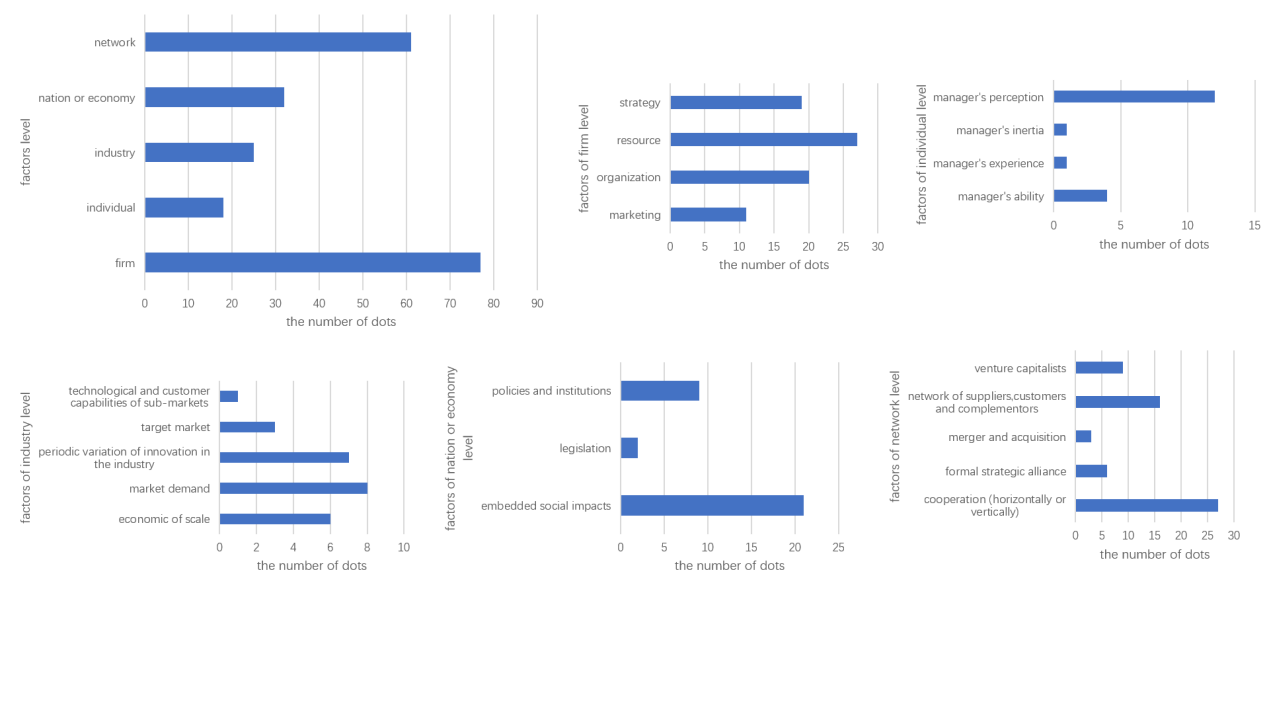
Figure 4: The number of reference dots of influence factors of disruptive innovation
5.Discussion
In 2001, China's accession to the WTO accelerated the process of the integration of China's economy and the world economy. For Chinese enterprises, they got more development opportunities, including more and broader platforms. According to Figure 1, China's GDP saw the highest year-on-year growth rate in 2008, between 1960 and 2022. During the period around 2004, the Chinese government issued many policies that were conducive to the development of enterprises to continuously deepen the reform of the economic system. The rapid development of the economy may be conducive to the birth of innovative enterprises. In 2014, China's economy in the new normal reform into the deepwater zone, the new policy began, such as registered company fill capital not immediately actually a cent to the bank, the Ministry of Commerce and commerce registered company only subscribed the total amount of registered capital, do not need to register paid-in capital, no longer ask for capital verification documents, in other words, the threshold of the company straight down, zero down payment can set up a new company. This is the reason why the number of innovative companies increased during this period, around the year 2014.
Sustainable innovation is an important factor for enterprises to obtain the core competitiveness in the modern society. The continuous R & D investment may ensure the smooth progress of enterprise innovation. Among innovative enterprises, the first turning point for their innovation is that when the enterprise accumulates a certain amount of capital, it will establish its own R & D center, and then develop innovative patent products for their own enterprises. Large enterprises have a very strong strength to invest in R & D institutions, while small businesses have a very strong willingness to invest in R & D [19]. When large enterprises have enough capital, they directly invest in the research and development of new products or patents. If they lack funds, they may seek external cooperation or support from national related projects to make up for the lack of research and development funds.
From the perspective of enterprises, these innovative enterprises more or less have certain innovation resources. For example, the C & C08B2000 digital programming user exchange system developed by Huawei employing highly educated engineers laid the foundation for the subsequent development of the enterprise. Anta Group acquired FILA and maintained the right of independent operation of FILA management team. IMEik has China's first hyaluronic acid product "Yimei", which obtained the medical device certificate. From the network level, these innovative enterprises are more willing to focus on the Horizontal and vertical cooperation. For example, BYD announced with Shenzhen institute of advanced technology, Chinese Academy of Sciences, Hong Kong university of science and technology and other institutions signed a strategic cooperation agreement, and the second largest electric battery manufacturer Maxwell signed a cooperation agreement, signed with the peer GEELY agreement formally established a joint venture —Xiamen new energy auto parts co., LTD.SERES Group A joint venture with a large domestic enterprise group Dongfeng Group, Ltd., into the minibus industry. Nongfu spring and Gannan normal university joint citrus integrated pest control, and Xiamen university cooperation for citrus dragon disease research, hand in hand with the Chinese academy of agricultural sciences institute of citrus Hamlin sweet orange and new hl navel orange rejuvenation and detoxification tree preservation research, cooperation with China agricultural university for the recovery of fruit and vegetable juice product production and processing process research, and China food fermentation industry research institute for the recovery of fruit juice authenticity research. From the level of Individual, managers' cognition is very important for enterprise innovation. The founders of enterprises have received more or less good education when they were young. For example, the founders of BeiGene obtained a PhD in biochemistry from the Southwestern Medical Center of the University of Texas in the United States, and then conducted postdoctoral research under the Nobel laureates Michael Brown and Joesph Goldstein. The chairman of NAURA has a master's degree, an MBA, and is a professor-level senior engineer. Chairman of FIRST, graduated from Zhejiang Institute of Technology (Zhejiang University of Technology) in 1982, majoring in chemical machinery, senior engineer. In terms of industry, perhaps because most of these enterprises analysed are listed companies, large enterprises may pay less attention to the secondary market, but still pay more attention to the mainstream market. Finally, at the nation / economy level, ESG has become the "vane" for the sustainable development of Chinese enterprises. According to the data of the China Association of Listed Companies, as of 2023, more than 1,700 listed companies have separately compiled and released ESG-related reports for 2022, accounting for 34%. Compared with the 1112 ESG disclosed enterprises, a net increase of nearly 600. For market perception innovation, whether the results can be accepted by the market and the profits earned is very important for enterprise innovation. Among ESG, environment, social responsibility and corporate governance, social responsibility has the greatest impact on corporate innovation [20].
6.Conclusion
A new round of scientific and technological revolution and industrial transformation is reshaping the global innovation landscape and reshaping the global economic structure. The innovative development of Chinese enterprises needs to keep in step with the general direction of the country's overall economic development. The core competitive advantage of an enterprise mainly falls on the core products. For Chinese enterprises, it is a good start to have a unique technological innovation product. At the same time, the technological innovation product also needs to have a certain consumer market or customer groups. After accumulating a certain amount of enterprise funds, enterprises may begin to consider having their own research and development system or institutions. An excessive allocation of resources towards research and development may necessitate alternative strategies, such as forming partnerships with other enterprises or collaborating with university laboratories. In this context, exploring opportunities for funding support through national projects can also be a viable approach. Moreover, the cognitive understanding of innovation held by enterprise managers plays a significant role in shaping their strategic decisions. Specifically, managers who possess relevant education, management knowledge, or technical expertise are more likely to navigate the complexities of technological innovation effectively. In this regard, having technically proficient managers can prove advantageous for technology-driven enterprises as they navigate the myriad of choices along their innovation journey.
The above analysis conclusions are all from large enterprises. Due to the lack of relevant information on small enterprises, it is more likely to be biased toward sustaining innovation. According to disruptive innovation theory, some of the secondary markets that these big companies ignore, or those that small companies can consider. Among these innovative enterprises, there are also 5 enterprises that are incubated by large enterprises in the early stage, and then become an enterprise independently, opening up a new market. From the above analysis content, basically see no low-end disruptive innovation. This area may be a gap in the process of enterprise innovation and development. In the process of chasing the mainstream market, Chinese enterprises may also need to pay attention to the needs of a small number of customers and pay attention to the niche market. In the past few decades, the Chinese market has presented a large number of blank, for enterprises, it is easy to find their position in the market, but with the existing market before the big enterprises, market resources, small businesses in recent years how to find a new technology innovation road may be a little difficult, set up some can dig people real consumer demand problem, rather than ask some after-sales service experience evaluation class problems, may have certain help.
References
[1]. Xidong, J. (2023). The Productivity Level of the Song Dynasty. Social Sciences in China, 44(2), 74-93.
[2]. Schwab, K. (2017). The fourth industrial revolution. Crown Currency.
[3]. Pradhan, R. P., Arvin, M. B., Nair, M., & Bennett, S. E. (2020). The dynamics among entrepreneurship, innovation, and economic growth in the Eurozone countries. Journal of Policy Modeling, 42(5), 1106-1122.
[4]. Solow, R. M. (1956). A contribution to the theory of economic growth. The quarterly journal of economics, 70(1), 65-94.
[5]. Romer, P. M. (1990). Endogenous technological change. Journal of political Economy, 98(5, Part 2), S71-S102.
[6]. Aghion, P. (1990). A model of growth through creative destruction.
[7]. Christensen, C. M. (2015). The innovator's dilemma: when new technologies cause great firms to fail. Harvard Business Review Press.
[8]. Christensen, C.M., Raynor, M., Mcdonald, R. (2015). What is disruptive innovation? Harvard Business Review Press. 93 (12): 44–53.
[9]. Christensen, C., & Raynor, M. (2013). The innovator's solution: Creating and sustaining successful growth. Harvard Business Review Press.
[10]. Christensen, C. M. (2015). The innovator's dilemma: when new technologies cause great firms to fail. Harvard Business Review Press.
[11]. Christensen, C. M., McDonald, R., Altman, E. J., & Palmer, J. E. (2018). Disruptive innovation: An intellectual history and directions for future research. Journal of management studies, 55(7), 1043-1078.
[12]. Reinhardt, R., & Gurtner, S. (2018). The overlooked role of embeddedness in disruptive innovation theory. Technological Forecasting and Social Change, 132, 268-283.
[13]. Guo, J., Pan, J., Guo, J., Gu, F., & Kuusisto, J. (2019). Measurement framework for assessing disruptive innovations. Technological Forecasting and Social Change, 139, 250-265.
[14]. Kivimaa, P., Laakso, S., Lonkila, A., & Kaljonen, M. (2021). Moving beyond disruptive innovation: A review of disruption in sustainability transitions. Environmental Innovation and Societal Transitions, 38, 110-126.
[15]. Si, S., & Chen, H. (2020). A literature review of disruptive innovation: What it is, how it works and where it goes. Journal of Engineering and Technology Management, 56, 101568.
[16]. Wang, C., Qureshi, I., Guo, F., & Zhang, Q. (2022). Corporate social responsibility and disruptive innovation: The moderating effects of environmental turbulence. Journal of Business Research, 139, 1435-1450.
[17]. Li, R., Rao, J., & Wan, L. (2022). The digital economy, enterprise digital transformation, and enterprise innovation. Managerial and Decision Economics, 43(7), 2875-2886.
[18]. Gherghina, Ș. C., Botezatu, M. A., Hosszu, A., & Simionescu, L. N. (2020). Small and medium-sized enterprises (SMEs): The engine of economic growth through investments and innovation. Sustainability, 12(1), 347.
[19]. Yu, Y., & Xu, Q. (2022). Influencing factors of enterprise r&d investment: post-subsidy, sustainability, and heterogeneity. Sustainability, 14(10), 5759.
[20]. Di Simone, L., Petracci, B., & Piva, M. (2022). Economic sustainability, innovation, and the ESG factors: An empirical investigation. Sustainability, 14(4), 2270.
Cite this article
Gong,Y. (2025). Research on the Development Direction of Chinese Enterprises’ Innovation under the Technological Revolution. Advances in Economics, Management and Political Sciences,133,8-15.
Data availability
The datasets used and/or analyzed during the current study will be available from the authors upon reasonable request.
Disclaimer/Publisher's Note
The statements, opinions and data contained in all publications are solely those of the individual author(s) and contributor(s) and not of EWA Publishing and/or the editor(s). EWA Publishing and/or the editor(s) disclaim responsibility for any injury to people or property resulting from any ideas, methods, instructions or products referred to in the content.
About volume
Volume title: Proceedings of the 4th International Conference on Business and Policy Studies
© 2024 by the author(s). Licensee EWA Publishing, Oxford, UK. This article is an open access article distributed under the terms and
conditions of the Creative Commons Attribution (CC BY) license. Authors who
publish this series agree to the following terms:
1. Authors retain copyright and grant the series right of first publication with the work simultaneously licensed under a Creative Commons
Attribution License that allows others to share the work with an acknowledgment of the work's authorship and initial publication in this
series.
2. Authors are able to enter into separate, additional contractual arrangements for the non-exclusive distribution of the series's published
version of the work (e.g., post it to an institutional repository or publish it in a book), with an acknowledgment of its initial
publication in this series.
3. Authors are permitted and encouraged to post their work online (e.g., in institutional repositories or on their website) prior to and
during the submission process, as it can lead to productive exchanges, as well as earlier and greater citation of published work (See
Open access policy for details).
References
[1]. Xidong, J. (2023). The Productivity Level of the Song Dynasty. Social Sciences in China, 44(2), 74-93.
[2]. Schwab, K. (2017). The fourth industrial revolution. Crown Currency.
[3]. Pradhan, R. P., Arvin, M. B., Nair, M., & Bennett, S. E. (2020). The dynamics among entrepreneurship, innovation, and economic growth in the Eurozone countries. Journal of Policy Modeling, 42(5), 1106-1122.
[4]. Solow, R. M. (1956). A contribution to the theory of economic growth. The quarterly journal of economics, 70(1), 65-94.
[5]. Romer, P. M. (1990). Endogenous technological change. Journal of political Economy, 98(5, Part 2), S71-S102.
[6]. Aghion, P. (1990). A model of growth through creative destruction.
[7]. Christensen, C. M. (2015). The innovator's dilemma: when new technologies cause great firms to fail. Harvard Business Review Press.
[8]. Christensen, C.M., Raynor, M., Mcdonald, R. (2015). What is disruptive innovation? Harvard Business Review Press. 93 (12): 44–53.
[9]. Christensen, C., & Raynor, M. (2013). The innovator's solution: Creating and sustaining successful growth. Harvard Business Review Press.
[10]. Christensen, C. M. (2015). The innovator's dilemma: when new technologies cause great firms to fail. Harvard Business Review Press.
[11]. Christensen, C. M., McDonald, R., Altman, E. J., & Palmer, J. E. (2018). Disruptive innovation: An intellectual history and directions for future research. Journal of management studies, 55(7), 1043-1078.
[12]. Reinhardt, R., & Gurtner, S. (2018). The overlooked role of embeddedness in disruptive innovation theory. Technological Forecasting and Social Change, 132, 268-283.
[13]. Guo, J., Pan, J., Guo, J., Gu, F., & Kuusisto, J. (2019). Measurement framework for assessing disruptive innovations. Technological Forecasting and Social Change, 139, 250-265.
[14]. Kivimaa, P., Laakso, S., Lonkila, A., & Kaljonen, M. (2021). Moving beyond disruptive innovation: A review of disruption in sustainability transitions. Environmental Innovation and Societal Transitions, 38, 110-126.
[15]. Si, S., & Chen, H. (2020). A literature review of disruptive innovation: What it is, how it works and where it goes. Journal of Engineering and Technology Management, 56, 101568.
[16]. Wang, C., Qureshi, I., Guo, F., & Zhang, Q. (2022). Corporate social responsibility and disruptive innovation: The moderating effects of environmental turbulence. Journal of Business Research, 139, 1435-1450.
[17]. Li, R., Rao, J., & Wan, L. (2022). The digital economy, enterprise digital transformation, and enterprise innovation. Managerial and Decision Economics, 43(7), 2875-2886.
[18]. Gherghina, Ș. C., Botezatu, M. A., Hosszu, A., & Simionescu, L. N. (2020). Small and medium-sized enterprises (SMEs): The engine of economic growth through investments and innovation. Sustainability, 12(1), 347.
[19]. Yu, Y., & Xu, Q. (2022). Influencing factors of enterprise r&d investment: post-subsidy, sustainability, and heterogeneity. Sustainability, 14(10), 5759.
[20]. Di Simone, L., Petracci, B., & Piva, M. (2022). Economic sustainability, innovation, and the ESG factors: An empirical investigation. Sustainability, 14(4), 2270.





